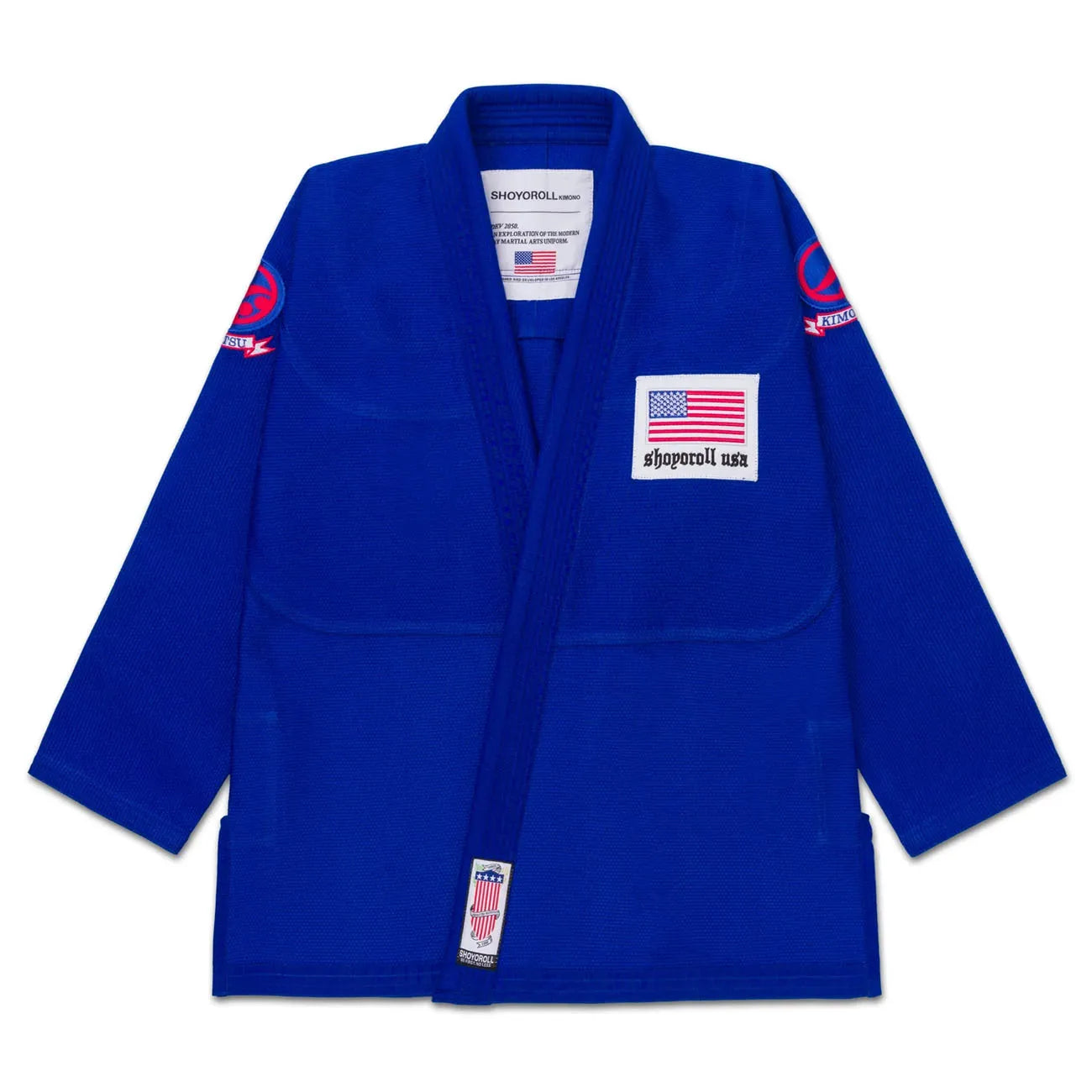How to Practice Jiu Jitsu Alone: A Complete Guide
Want to take your Brazilian Jiu-Jitsu (BJJ) skills to next level but can’t get to a gym or find a training partner? You’re not alone. Busy schedules, long distances, or limited dojo access can make training tough. The good news? You can practice Jiu-Jitsu solo at home! Solo training boosts your technique, strength, and confidence. It’s not a full replacement for partner rolling, but it’s a fantastic way to stay sharp. This guide covers detailed steps, expanded drills, practical tips, and answers to common questions to help you train effectively. Let’s dive in!
Table of Contents
- The Benefits of Solo BJJ Training
- Setting Up Your Solo Jiu-Jitsu Practice Space
- Must-Know Solo Jiu-Jitsu Drills
- Advanced Solo Drills for BJJ Practitioners
- Top Tips for Effective Solo BJJ Practice
- Safety First: Avoiding Injuries in Solo BJJ
- Combining Solo and Partner Training for BJJ Success
- FAQs About Practicing Jiu-Jitsu Alone
- Conclusion: Take Your Jiu-Jitsu to the Next Level
Ready to transform your home into a Jiu-Jitsu training hub? Here’s why solo practice is a game-changer.
The Benefits of Solo BJJ Training
Solo training is a powerful tool for any Jiu-Jitsu practitioner. It lets you work on skills without needing a gym or partner. Here’s why it’s worth your time.

Build Muscle Memory Without a Partner
Solo drills let you repeat movements until they become second nature. For example, practicing shrimping or guard retention builds muscle memory. This makes your techniques smoother during live rolls. Repeating drills daily can significantly improve your BJJ basics, with some practitioners seeing up to 30% progress in a month. Focus on slow, precise movements to perfect your form.
Enhance Flexibility and Conditioning
Jiu-Jitsu demands a strong core and flexible hips. Solo drills like hip escapes and leg circles improve mobility. They also strengthen muscles used in grappling. A strong core helps you escape tough positions, like bottom mount. Solo training lets you focus on these areas at your own pace.
Train Anytime, Anywhere
Solo BJJ practice is incredibly flexible. You can train anywhere, anytime—no gym required. No need to worry about class schedules or fees. This is perfect for busy people. As one BJJ enthusiast shared on Reddit’s r/bjj, “Solo drills keep me sharp when I can’t get to class.”
Let’s set up a safe and effective training space for your solo sessions.
Setting Up Your Solo Jiu-Jitsu Practice Space
A good practice area is essential for safe and fun training. Here’s how to set it up.
Create a Safe Training AreaPick a flat space in your home. A 5x5 or 5x8 puzzle mat is ideal for cushioning, but a soft rug or carpet works too. Mats are safer for drills involving falls or rolls, preventing bruises or injuries. Clear the area of sharp objects like furniture edges to avoid accidents. A padded surface protects you during dynamic movements like technical stand-ups or rolling drills. |

|
Essential Equipment for Solo BJJ
You don’t need fancy gear to train solo. A grappling dummy adds realism and costs around $50-$150. A heavy bag is great for practicing position drills like mount transitions. Resistance bands, starting at $10, help with strength training for pulling and pushing motions. Many drills require no equipment, so you can start immediately with just your bodyweight!
Time to move! These expanded solo drills will elevate your Jiu-Jitsu skills.
Must-Know Solo Jiu-Jitsu Drills
Solo drills are the heart of practicing BJJ alone. They target key movements and techniques critical for grappling. Below are detailed drills with step-by-step instructions to help you improve.
Hip Movement and Escape Drills
Hip mobility is vital in Jiu-Jitsu. It helps you create space, escape bad positions, and transition smoothly. These drills strengthen your hips and core for better escapes.
- Hip Escapes (Shrimping): Lie flat on your back with knees bent and feet planted. Push off one foot to slide your hips sideways, keeping your shoulders on the ground. Swing your hips to one side, then bring your knees back to center. Alternate sides to mimic escaping an opponent’s mount. Do 3 sets of 12 reps per side. Try variations like shrimping with one leg extended to challenge your balance and coordination.
- Hip Thruster Drills: Lie on your back with knees bent and feet flat. Drive your hips upward as high as possible, squeezing your glutes at the top. Hold for 2 seconds, then slowly lower back down. This strengthens your core and hips for bridging escapes. Perform 3 sets of 15 reps, focusing on controlled movement to avoid straining your lower back.
- Reverse Shrimps: Start on your stomach with elbows tucked under your chest. Pull your knees toward your body while pushing backward with your arms. Move your hips back to mimic escaping from bottom positions like turtle guard. Keep your movements smooth and deliberate. Do 3 sets of 12 reps, alternating directions to build fluidity.
These drills improve your ability to create space, escape mounts, and transition to better positions during a roll.
Guard Retention and Attack Techniques
Guard retention keeps you safe and sets up attacks. These solo drills help you practice defensive and offensive skills without a partner.

- Underhook Retention: Sit on the floor with legs bent and feet flat. Reach under one thigh as if grabbing an opponent’s underhook. Pull your arm through and hold for 5 seconds, engaging your core. Return to the starting position and switch sides. This mimics securing underhooks in guard. Do 3 sets of 10 reps per side, focusing on smooth arm motion and core stability.
- Stack Pass Retention: Lie on your back with knees pulled toward your chest. Lift your hips slightly and frame your arms against your knees, as if blocking an opponent’s stack pass. Squeeze your core and hold for 3 seconds, then relax. This strengthens guard retention against pressure passes. Perform 3 sets of 12 reps, keeping your movements controlled to build endurance.
- Kimura Drill: Sit with legs crossed. Extend one arm forward, then bend it to mimic grabbing an opponent’s wrist for a Kimura submission. Rotate your torso and pull your elbow back, keeping your grip tight. Switch arms. This builds wrist control and shoulder strength. Do 3 sets of 10 reps per arm, ensuring slow, precise motions to avoid strain.
These drills enhance your ability to maintain guard and set up submissions.
Falling and Rolling Safely
Safe falling prevents injuries, especially when practicing alone. Practice on a mat or soft surface.
- Back Falls: Sit on the floor with knees bent. Roll backward gently, keeping your chin tucked to protect your head. As you fall, slap the ground with both arms at a 45-degree angle to absorb impact. Keep your body relaxed to avoid tensing up. Do 3 sets of 10 reps, focusing on smooth rolls and strong slaps to build confidence in falling safely.
- Side Falls: Start in a low squat. Lean to one side and fall gently onto your hip, keeping your arm extended. Slap the mat with your palm as you land to break the fall. Tuck your chin and keep your body loose. Alternate sides for 3 sets of 8 reps. This mimics falling during a takedown or sweep, reducing injury risk.
- Technical Stand-Ups: Lie on your back with knees bent. Roll to one side, post one hand on the ground, and swing your legs under to stand up. Keep your free arm up to protect your face, mimicking a defensive posture. Return to the starting position and repeat. Do 3 sets of 10 reps per side, focusing on smooth transitions to stand quickly and safely.
Proper breakfalls (ukemi) are critical for solo BJJ safety, especially for dynamic movements.
Core and Mobility Exercises
A strong core and flexible body are essential for grappling success. These drills improve strength, flexibility, and movement efficiency.

- Leg Circles: Lie on your back with legs extended. Lift one leg and draw large circles in the air, keeping your core engaged. Move slowly to stretch your hips and hamstrings. Switch directions after 10 circles, then change legs. Do 3 sets of 15 circles per leg to boost hip mobility for guard work and transitions.
- Hip Ups: Lie on your back with knees bent and feet flat. Bridge your hips up high, then twist to one side, lowering one hip slightly. Come back to the starting position and rotate to the opposite side. This move targets your core and oblique muscles, enhancing strength for grappling. Complete 3 sets of 12 repetitions, switching sides with smooth, controlled movements.
- Arm Triangles: Lie on your back and mimic the arm triangle choke motion. Thread one arm under an imaginary opponent’s neck, pulling your elbow toward your chest. Engage your core and hold for 3 seconds. Switch sides. This builds shoulder and core strength. Do 3 sets of 10 reps per side, keeping movements deliberate to maximize benefits.
These exercises enhance your ability to move fluidly and powerfully on the mat.
Feeling confident? These advanced drills add realism to your solo training.
Read More: 10 Must Have BJJ Training Equipment for BJJ Practitioners
Advanced Solo Drills for BJJ Practitioners
Once you master the basics, try these advanced drills. They simulate real BJJ scenarios and challenge your skills.
Position and Transition Drills
These drills improve your ability to hold and switch positions, mimicking live rolling.
- Neon Belly Drills: Lie on a heavy bag or grappling dummy in the knee-on-belly position. Shift your weight side to side, keeping your posture upright and core engaged. Practice transitioning your knee from one side of the bag to the other without losing balance. Do 3 sets of 10 shifts, focusing on smooth weight distribution to simulate controlling an opponent.
- Mount Transitions: Start in full mount on a heavy bag or dummy. Shift to side control by sliding your knees to one side, keeping your chest heavy. Return to full mount, then switch to the other side. Perform 3 sets of 8 transitions, maintaining pressure to mimic pinning an opponent.
- Side Control Switches: From side control on a dummy, lift your hips slightly and switch to the other side, keeping your shoulder pressure tight. Move smoothly to avoid losing control. Do 3 sets of 10 switches, alternating sides to build fluidity in transitions.
These drills prepare you for maintaining dominant positions in a roll.
Simulating Resistance with Equipment
Equipment adds realism to solo training, mimicking an opponent’s resistance.
|
 |
A grappling dummy or heavy bag makes these drills feel closer to live rolling.
Want to train smarter? These tips will maximize your solo practice.
Top Tips for Effective Solo BJJ Practice
Solo training works best with a smart approach. These tips will help you get the most out of every session.
Prepare Your Body Properly
Always warm up before drilling to loosen joints and muscles. Stretch your hips, shoulders, and back for 5-7 minutes to improve flexibility. After training, cool down with stretches like hamstring stretches or spinal twists to reduce soreness. A proper warm-up cuts muscle strain risk by up to 20%, according to fitness studies.
Focus on Technique and Form
Slow, deliberate movements build stronger technique. For example, practice shrimping with perfect hip alignment rather than rushing through reps. This creates reliable muscle memory. Record yourself with your phone to review your form. Watching your videos helps catch small errors, like improper arm placement, that you might miss during practice.
Stay Consistent and Motivated
Set small, realistic goals to stay on track. For example, aim to perfect reverse shrimps in a week. Track progress in a notebook or app, noting reps and improvements. Train 3-4 times a week for 20-30 minutes to build consistency without burnout. Mix up drills, like alternating hip escapes and guard retention, to keep sessions fun. Visualize applying your skills in a real roll to stay motivated.
Use Equipment Wisely
A grappling dummy or heavy bag adds realism to drills like mount transitions. Use resistance bands for strength exercises, such as pulling motions to mimic guard retention. If you don’t have equipment, bodyweight drills like leg circles or technical stand-ups are highly effective. Start with what you have and add gear as your budget allows.
Training alone means safety is your responsibility. Here’s how to stay injury-free.
Shoyoroll Feature Products

🔥 SAVE UPTO 50%
✅ 30 Days Return & Refund
🚚 Free Worldwide Shipping

🔥 SAVE UPTO 50%
✅ 30 Days Return & Refund
🚚 Free Worldwide Shipping

🔥 SAVE UPTO 50%
✅ 30 Days Return & Refund
🚚 Free Worldwide Shipping
Safety First: Avoiding Injuries in Solo BJJ
Without a partner to spot mistakes, safety is critical. Always use proper form during drills. For example, keep your back straight during hip ups to avoid strain. Master breakfalls to prevent injuries during falling drills. Don’t push beyond your limits—overexertion can lead to muscle tweaks or worse. One BJJ practitioner on Reddit warned, “Pushing too hard alone can sideline you for weeks.” Stop immediately if you feel pain and rest to recover.
Solo training is great, but pairing it with partner practice takes you further.
Read More: Ultimate Guide to BJJ Workouts at Home
Combining Solo and Partner Training for BJJ Success
Solo drills build a strong foundation, but partner training adds real-world feedback. Live rolling lets you test techniques against resistance and adapt to unpredictable movements. Experts emphasize, “Nothing replaces time on the mats with a partner.” Mix solo practice with gym sessions when possible. For example, drill shrimping at home, then apply it in a live roll at class. This combination accelerates your progress and hones your skills.
Got questions about solo BJJ? We’ve got answers to keep you rolling.
FAQs About Practicing Jiu-Jitsu Alone
Here are answers to common questions about solo BJJ training. These will help you train smarter and safer.
Can I Really Improve My BJJ Without a Partner?
Yes! Solo drills build muscle memory, strength, and mobility. They’re excellent for mastering basics like shrimping or guard retention. However, partner training is crucial for testing techniques in real scenarios. Combine both for optimal improvement.
What Equipment Do I Need for Solo BJJ?
You don’t need much. A mat or soft rug prevents injuries during falls. A grappling dummy ($50-$150) adds realism to drills. Resistance bands ($10-$20) help with strength training. Many drills, like hip escapes, require no gear at all.
Is Solo Training Safe for Beginners?
Yes, if you prioritize safety. Start with simple drills like breakfalls and shrimping. Use proper form and a padded surface. Avoid advanced moves until you’re confident. Always warm up and cool down to prevent injuries.
How Do I Stay Motivated Training Alone?
Set small goals, like learning one new drill each week. Track progress in a journal or app. Mix up drills to keep sessions exciting. Visualize using your skills in a real roll to stay focused and motivated.
Conclusion: Take Your Jiu-Jitsu to the Next Level
Practicing Jiu-Jitsu alone is a powerful way to boost your skills. You can improve technique, build strength, and train on your schedule. Start with simple drills like hip escapes and breakfalls. Stay safe with proper form, warm-ups, and a padded surface. Mix solo practice with partner sessions for the best results. Ready to start?








